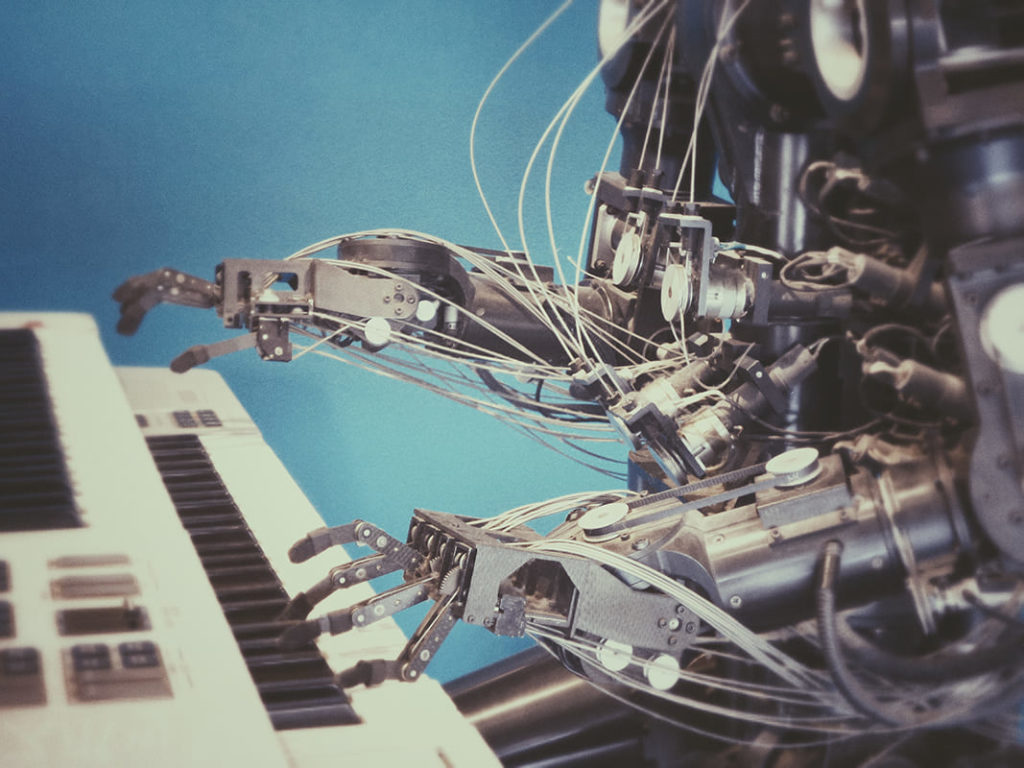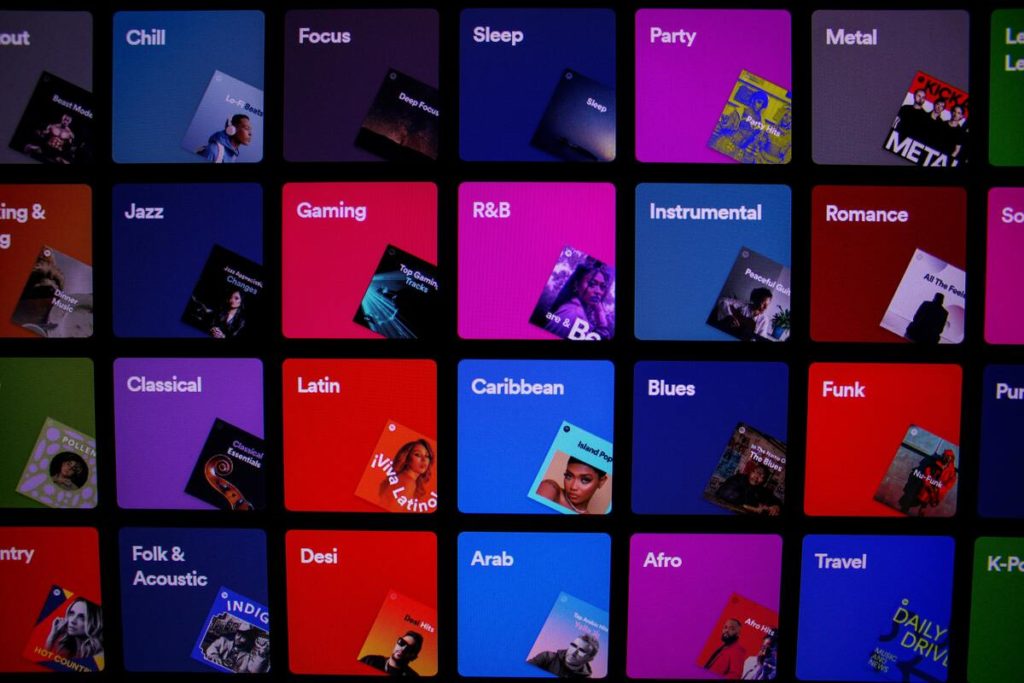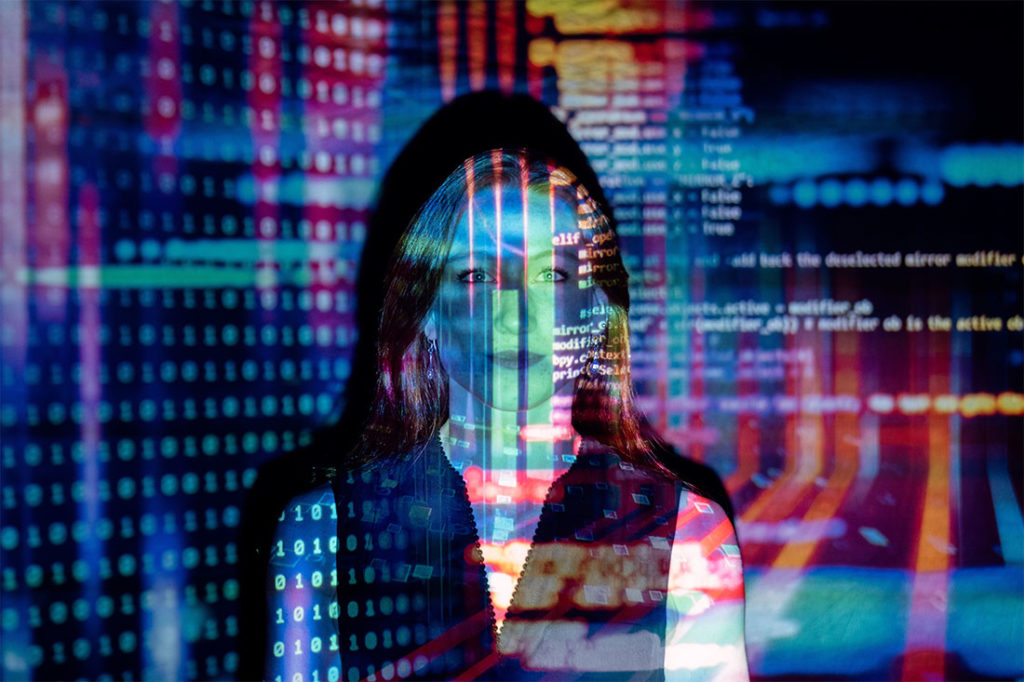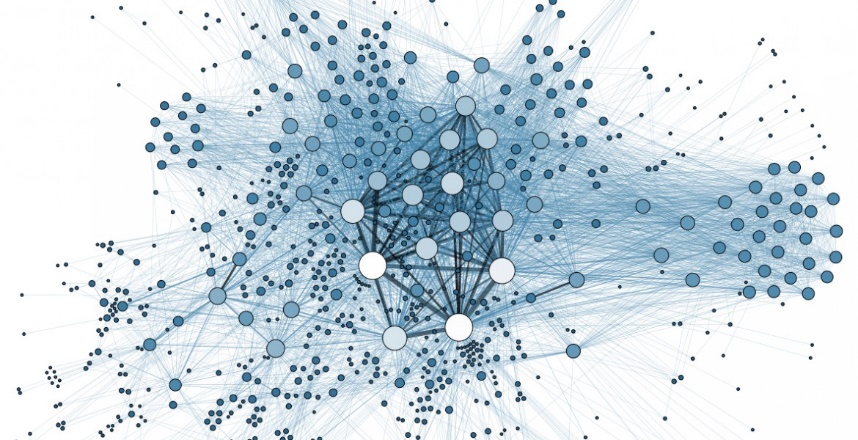Saving turtles, removing asbestos or detecting Alzheimer’s based on the words you use are just some of the examples of artificial intelligence that are already in many people’s everyday lives. In this article, we tell you about 25 examples of how AI is already being used in everyday life and business, beyond Tesla or Alexa.

What is artificial intelligence and how does it differ from traditional software?
We can say that artificial intelligence is basically software that simulates the capacity for abstract, creative and deductive thinking, and particularly the ability to learn, using the digital and binary logic of computers.
Furthermore, in combination with other technologies, such as IoT sensors, AIs can interpret the world around them and provide data-driven responses.
Combined with computing power and human imagination itself, the uses of artificial intelligence can be almost infinite.
But artificial intelligence is already present in many areas of our daily lives.
So let’s take a look at 25 AI examples
AI examples in healthcare
One of the most widespread uses of artificial intelligence in healthcare is robotic process automation (RPA) applications. This software is driven by ai o detect symptoms faster and anticipate diagnoses.
Cancer detection
An example of artificial intelligence in cancer detection. In the case of this disease, AI-based algorithms make it possible to detect genetic mutations and dangerous protein interactions at an early stage.
Microsoft, for example, has created ‘Inner Eye’, a software that combines Machine Learning (ML) and Natural Language Processing (NLP). This can help oncologists identify the most effective treatment for each patient.
The software makes it possible to identify genetic mutations and dangerous protein interactions at an early stage. It is even possible to predict how individual cells within the tumour will respond to which treatment.
Alzheimer’s, early detection with AI
For cognitive impairment diseases, technological software is being developed that scans speech patterns and vocabulary to detect early signs of Alzheimer’s disease.
Thanks to AI, subtle changes in speech and behaviour can be detected. This detection is faster and more reliable than human observations.
The aim is to implement it in a smartphone app. This app will facilitate diagnosis in a cheaper and more accessible way than traditional medical tests.
Thanks to NLP, the algorithm can carefully study the patient’s conversations. And it can analyse the variety of words people are using to assess their cognitive state.
Computer Vision is also used to analyse facial expressions alongside the words patients say in an interview. It also examines the acoustic signals of conversation.
The app compiles the data and then scores them on their risk and likelihood of showing signs of dementia.
These are two of the most interesting ai examples, as they save lives and improve people’s quality of life significantly.

Chatbots
This is one of the ai examples that almost everyone will have used at some point. Chatbots can provide concrete answers and detailed information. In addition, they can take orders, requests and complaints efficiently.
They are useful solutions for customer service departments as they optimise interactions between users and the company. Chatbots ensure a better customer experience. Through machine learning, they achieve a better understanding and processing of natural language.
An original example of a chatbot is Insomnobot3000, an application created by a mattress company to chat in a friendly way with people suffering from insomnia.
Another example of the use of chatbots is in online education, where “virtual coaches” can help increase the retention rate of students and monitor their progress. There are already LMS platforms that are using AI and developing pilot projects with NLP, such as Graspway EXT.
AI examples we all use
word processors
This is an AI example of ai that helps us every day.
When composing an email, a text message on a smartphone or a letter in Word, intelligent systems on computers or mobile devices allows automatic text editing and proofreading.
This intelligent software uses machine learning to identify typing errors and to help in the writing of texts.
Gmail, for example, detects that you have typed the word “attachment” and yet you have not added an attachment to the email. It will warn you before you send the message so that you attach a document.
Voice assistants
This software is capable of interpreting and processing speech and providing the most appropriate responses possible.
Voice assistants, which we all have on our smartphones, not only offer personalised responses but also learn from our routines and behaviour.
If you want to know more, here is this interesting article about voice assistants

Artificial intelligence in marketing
Artificial intelligence is currently fundamental in the world of Marketing and has a large number of applications
Predictive analysis
Predictive analytics allows us to anticipate the user’s needs and offer them the content, product or service they need. This is possible even before the user comes looking for it.
Some examples of applications that use AI in marketing are:
Meetcortex: is a SAAS platform that allows to understand which graphic or audiovisual content will have greater engagement and success with its audience.
Sentione and Brandwatch: These are social intelligence tools, i.e. they monitor the conversations and feelings of people on social networks.
Content generation
There are a large number of applications that help to generate content through artificial intelligence. Let’s take a look at some examples:
- Concured: is a software that is responsible for disseminating existing content in an intelligent way, according to the audience’s demand.
- Doofinder: an internal ecommerce search engine that allows users to find what they are looking for more quickly and efficiently.
- Articoolo: is an application that is able to generate from scratch or rewrite a text from any proposed topic.
Digital advertising
Programmatic advertising makes use of AI using cookies, chatbots and deep learning techniques to access information from various sources.
This allows advertising to be as personalised as possible and according to audience demand.
There are also many applications and platforms to monitor social media campaigns, some of them are Adext, Albert or Exod.
These are just some of the utilities of artificial intelligence in advertising and marketing. In addition, these two sectors make use of many other advantages that we discuss throughout this article,
Text-to-speech converters with AI
Another use of artificial intelligence is the platforms for converting text into video, thanks to the use of this technology, they perform this task in a more natural and professional way than conventional applications.
Some of the most prominent are: BeyondWordas, Clipchamp, Otter and Speechelo.
Transform text into video with artificial intelligence
Shyntesia is an application that allows you to transform the text into a video using avatars that simulate reading the content.
Thanks to artificial intelligence, the result is very natural and really professional.
The application, which works in the browser, has more than 40 avatars, interprets more than 60 languages and has customised templates and backgrounds.
It is a simple solution for creating quality videos explaining any content.

Smartphones cameras, AI examples we carry in our hands every day
More and more smartphone models are incorporating AI in their cameras to improve the images taken.
The cameras, thanks to AI and machine learning, can identify scenes, adjust light and focus and image quality.
They also use artificial intelligence to erase or reduce the graininess of moving pictures.
The latest Samsung models, for example, incorporate the “object eraser” function. Artificial intelligence removes unwanted objects and people by filling their space with colours and shapes similar to the background.
Spam or junk mail
One of the most useful AI tasks for users is detecting and referring spam.
Thanks to artificial intelligence, e-mail servers automatically forward such e-mails.
As each user has his or her preferences, the manager can detect which ones are wanted thanks to automatic learning.
Digital twins
Digital twins are simulated replicas of the real world. They are used in the industrial sector, for example, to test processes on digital models before applying them to real-world machinery.
Digital twin construction makes use of artificial intelligence and machine learning to create increasingly realistic and accurate models.
The main advantage is to be able to test innovations without taking risks.
Thanks to artificial intelligence, simulations are becoming more and more realistic and better reflect the physical world.
We tell you more about digital twins in this article.
Music recommendations
The artificial intelligence of services like Spotify and Alexa learns the diverse musical tastes and preferences of users. The data collected and analysed allows them, for example, to create personalised playlists for each user, without human intervention.
A simple but very practical example of artificial intelligence.

Google image recognition
This area involves a very specific model of AI: computer vision. This technology can recognise patterns of colours and shapes in images. Since machines are only able to recognise code, thanks to this technology they are now also able to recognise images.
Google Photos, for example, can organise and group the photos you save, so that you can find them with a simple search. The more photos you save, the more information it analyses and the more the application itself learns.
Even Google itself has already launched tools to control and suppress the socio-cultural biases that artificial intelligence is inheriting from the data it is trained on.
The Netflix user experience
Netflix uses artificial intelligence both to improve the user experience and offer a better service and create its own content.
It collects a large amount of data within the application, such as the genre of films, actors and directors, the language used… And even how series of films are watched, as well as the frequency and times at which they use the service or watch certain content.
With this data, an algorithm is trained and used by the platform to process the information. The result is a system of recommendations that adapts to the tastes and preferences of each customer.
Moreover, all this information is not only used to improve the user experience.
Netflix analyses all this information to incorporate it into new series and films to make them as successful as possible.
Advertising
Artificial intelligence in this sector uses the data on your searches and purchases on different websites or search engines. Based on the analysis, it targets advertisements related to those products.
The AI also uses information related to demographic data such as your age, gender, occupation, etc… Based on this it delivers product advertisements that best suit the user’s preferences.
Financial consulting without humans
One example is Betterment. It is an autonomous financial investment platform that works like a consultant.
Using AI it learns about an investor based on the data. It builds a personalised profile based on their financial plans.
This consultant uses algorithms to automate tasks that would normally require skilled personnel with advanced financial knowledge.
Another example of this is robo-advisors, which have enabled significant cost reductions and efficiency gains in investment platforms such as Indexa Capital or Finizens.
Resource and energy efficiency
Process industries, which manufacture and transform materials in large quantities, are built on the intensive use of energy and raw materials. And the development of artificial intelligence benefits them greatly,
For example, the MONSOON project uses AI-based predictive methods to optimise production processes in plants. Producing savings in energy use and carbon emissions.
This project could contribute to the adoption of new, more accurate control and monitoring systems in European process industries.

AI examples in construction
Efficient and environmentally friendly buildings
Using AI-based algorithms and data analysis, faults or inappropriate configurations of different building equipment can be identified. It can also alert to user behaviour that is not energy efficient.
Examples of artificial intelligence in this sector include the HIT2GAP project. This project has created a new building energy management platform.
It is an open-source system so that external developers can improve it according to changing building conditions.
Disposal of toxic waste, such as asbestos
The Bots2ReC project has developed a robotic system capable of managing asbestos removal in buildings.
Thanks to AI, the system can tackle the job holistically and not just piece by piece. In addition, it automatically adapts to the available plans of a building, optimising the process and reducing risks.
The removal of asbestos is a process that puts the lives of the workers involved at risk due to the polluting dust that is produced during removal.
The sector has taken the initiative very positively.

An AI examples to save turtles
This is one of the most beautiful examples of artificial intelligence on this list. CSIRO is a system created by the Aak Puul Ngantam (APN) ranger team, together with Australia’s National Environmental Science Program (NESP).
Using a cloud system and artificial intelligence, they analyse photographs of Australia’s northern coastline. This allows them to detect endangered turtle nests.
Thanks to this, the rangers can identify endangered turtles even in areas that are difficult to access. Once located, they can then move to safety from predators or storms that could jeopardise the recovery of the species.
Artificially intelligent translators
They are an essential and very useful tool. Thanks to artificial intelligence, their performance has improved significantly in recent years.
One of the best, Deepl, uses deep learning technology, which it implements to correct errors and learn from each translation process it carries out.
It also draws on translations from the Linguee dictionary.
This means that translations are not word-for-word, but use and recognise expressions in each language. This helps to create more reliable and human translations. It is even able to identify brand names or commercial products and leave them intact in the translation.

Harvesting fragile vegetables at optimum ripeness
Xihelm has developed a robot that uses AI to identify the ripeness of fruit and vegetables. In addition, the machine carefully picks fragile foods, such as tomatoes. It chooses the moment of peak ripeness and then carefully packs them.
The system provides real-time data on whether the harvest is available for sale and even if any plants might be diseased. The robot greatly reduces production costs. In addition, it only picks the ready fruit.
AI Examples in education
Personalised learning thanks to AI
This is another very useful and innovative example of artificial intelligence. Thinkster Math uses artificial intelligence and machine learning to track the steps students take to solve mathematical problems. Students solve problems in the application and report their progress.
The software matches students with maths tutors who customise their programmes based on each student’s characteristics and needs.
Teachers use Thinkster Math to determine how students learn and understand and to identify individual student gaps. It also helps personalise learning in a much faster and more practical way than remediation in the traditional way.
Virtual teacher
This is a technology similar to chatbots but aimed at teaching and resolving educational doubts.
An example of this application can be found in the ‘EconBot’ tool. A chatbot created for UNED Economics students that even has its own Facebook page.
The chat provides answers to students’ questions about educational doubts and economic issues.
5g and AI for emergency services
5G rescue aims to make the potential of 5G technology and AI available to emergency services.
The aim is to develop and integrate a series of intelligent network management mechanisms. In this way, it is possible to enable a high-definition, low-latency video streaming service. The video would reach both the command centre and hospitals as well as vehicles travelling to the area.
In this way, even more, comprehensive patient care could be provided during emergencies.
Saving lives is certainly one of the most humane examples of artificial intelligence we can find.

Artificial intelligence-driven cyber security
We live in an increasingly connected and virtual world full of digital threats, such as data breaches.
The application of artificial intelligence in cybersecurity is an essential way to significantly improve cybersecurity.
It can find the ideal solution in a given situation thanks to its programming.
Some of the advantages of using artificial intelligence in this field are:
- Threat prediction
- Reduced response time to threats
- Artificial intelligence can’t get enough
- Ability to equip teams
- Highly adaptive and learnable thanks to machine learning.
However, while they are increasingly used, they still need a human team to support them with their potential
An app for moving to the village
SantIA is an app that uses AI to analyse the personality and circumstances of people living in cities. It compares their current life with their possible life in Santas Martas, or a similar village in uninhabited Spain.
The app identifies needs in the villages, which will allow it to launch concrete projects based on data and real needs.
In this way, it aims to turn depopulated areas of rural Spain into smart villages.

AI examples in driving
Cars are clear ai examples where we can see the many uses that can be made of this technology. Artificial intelligence is already capable of efficiently assisting in driving. AI makes its own decisions. At the same time, it informs us of the data it receives from a host of sensors and cameras that surround vehicles.
Among the systems that can be found are lane change alerts and emergency braking. Also automatic parking, blind-spot monitoring and even steering assistance.
All these systems continue to evolve until they reach the point of fully autonomous driving.
Artificially intelligent cars
As we have seen above, AI can help very effectively in driving itself.
But AI can also help in other aspects related to the car, such as:
- User recognition and identification. The software can know which driver is in control and adapt conditions to their preferences.
- Monitoring while driving. By observing the driver’s eyes and head movement, the system can tell if the driver is falling asleep.
- Control functions. Like controlling the music, maps or notifications that arrive on your phone.

As we can see from the examples of artificial intelligence, the usefulness of this technology is practically infinite. The evolution of technology, processes and the computational capacity of computers will make the possibilities of artificial intelligence ever greater.
Can you think of any other good AI examples to include in the list? Tell us about them!




